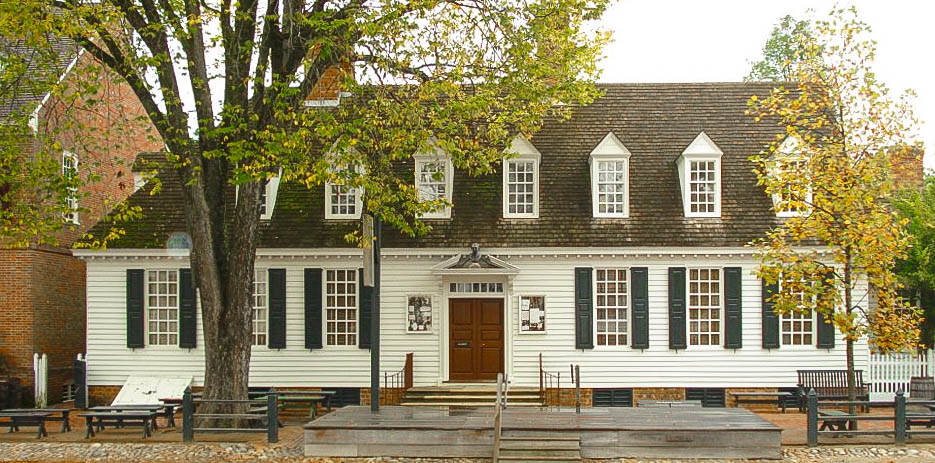It was May 17, 1769. America’s independence from Britain was more than seven years away.
And members of Virginia‘s colonial legislature, the House of Burgesses in Williamsburg, were already chafing against the Royal Governor, Lord Botetourt. He dissolved their meeting in the Capitol, so they took a short walk down Duke of Gloucester Street to the Raleigh Tavern.
It wouldn’t be the last time Members met there, openly or otherwise.
In 1773, Patrick Henry, Thomas Jefferson, and other patriots held a secret meeting at the Raleigh Tavern to form a Committee of Correspondence. These were groups of patriots in different colonies who wrote back and forth to each other. They kept one another informed about political events and coordinated responses as America moved closer to Revolution. Committees of Correspondence played a key role in America’s winning independence from Britain.
In May 1774, Burgesses once again found refuge at Raleigh Tavern. The Royal Governor this time around, Lord Dunmore, had dissolved them in response to their resolutions against the Boston Port Act. Britain had closed the vital Port as punishment for the Boston Tea Party.
The Raleigh was one of the largest taverns in colonial Virginia. It is also one of the most significant in American history, thanks to meetings like these.
The original Tavern was built by 1735. It is named after Sir Walter Raleigh, who founded the lost colony of Roanoke in what is now North Carolina.
In addition to Revolutionary meetings, the Tavern hosted balls and banquets, as well as the usual drinking and gambling.
It remained in continual use until an arsonist destroyed it in 1859. In 1931, it became the first building reconstructed and opened as part of Colonial Williamsburg.
Today it’s a museum with guided tours. It also hosts fascinating performances. Over the years, I’ve heard newspaperman Alexander Purdie wax nostalgic about the days before the traumas of the War, plantation foreman Daniel anguish over the duties and tensions of supervising fellow slaves, and the Marquis de Lafayette and slave-turned-spy James Armistead Lafayette reminisce over tea about their roles in beating the British at Yorktown, the decisive battle of the Revolutionary War, 12 years after the Burgesses first met at Raleigh Tavern.
note: The Raleigh Tavern today is not an operating restaurant. It does however maintain a working Bakery, where you can find drinks and light snacks during the day, including Williamsburg’s popular ginger cakes.
Continue your adventure on the East Coast:
- Springtime at Rehoboth Beach
- Two Days in Boston
- MGM National Harbor Spa & Salon
- National September 11 Memorial and Museum in New York
- Magnolia Plantation & Gardens in South Carolina
- Lafayette Square in Washington, D.C.
After my misspent youth as a wage worker, I’m having so much more fun as a blogger, helping other discerning travellers plan fun and fascinating journeys. Read more …

